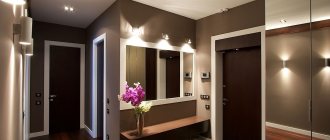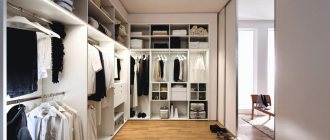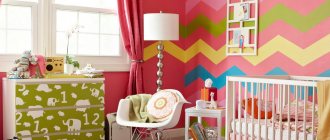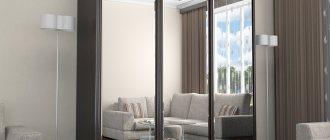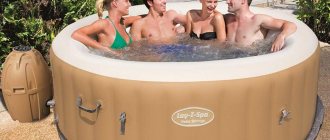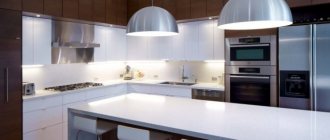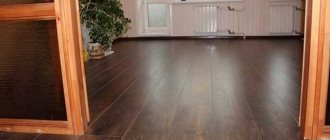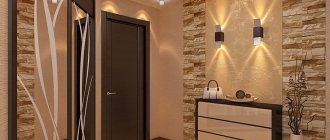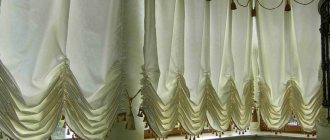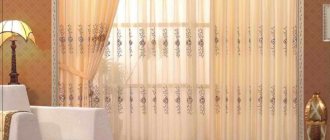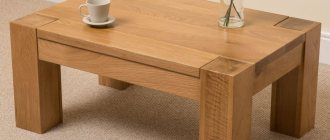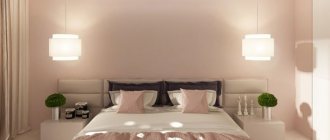Every homeowner wants to see their home beautiful, well-groomed and unique. The good thing is that the use of modern building materials makes it possible to realize most of his fantasies. The entrance hall can be called the face of any home, be it a country residence or a city apartment. Guests form their opinion about the house often under the impression of the hallway and its appearance. And that’s why interior designers pay special attention to it.
Decorative plaster in the interior in the hallway.
For its finishing, many materials are used, and not the least important role among them is played by decorative plaster in the hallway. What it is, how to prepare it and put it into practice, we’ll talk about all this below.
What should the plaster be like?
An example of decorative plaster in the interior.
Plaster composition is essentially a mixture based on a number of components (cement, clay, sand), which is used for the final finishing of walls and ceilings. But, it should be understood that such plaster is fundamentally different from general construction plaster, used for rough processing of walls and ceilings.
Decorative plaster in light colors.
Decorative natural plasters are multilayer coatings that include at least two layers. The first layer is a primer, it must be compatible with the wall material. That is, one primer is used for brick, another for wood, etc. For final finishing, a mixture is used, which consists of a binder component that is saturated with various types of fillers.
Textured
In contrast to a smooth texture that does not have much variety, textured decorative plaster proudly takes on noble rocks.
The use of such texture undoubtedly gives the living space a certain stately aplomb.
Decorative plaster in the hallway looks especially advantageous. Tenderness, warmth, comfort - what other words come to your mind when you look at such an interior in front of you?
Not an example, but a real revelation in the context of modern design art. The texture most closely resembles the skin of a crocodile that went to the next world a couple of hours ago. This option is most suitable for apartments and houses furnished in the Art Nouveau style.
Pleasant to the eye decorative plaster with a vertical texture that significantly expands the narrow space of the hallway. The wood texture significantly enriches the room.
The natural rocky structure in any of its manifestations - in tiles, plaster or any other type of material - always attracts attention with its impressive execution.
Another option for plaster in the hallway. A somewhat harsh imitation of stone blocks favorably mirrors glossy stretch ceilings, creating an impressive design composition. The owners of this room are definitely not afraid to experiment with texture and strive to move away from popular color schemes. Which in itself is not bad and at least arouses interest and respect!
The renovation is not yet complete, but its results are already clearly visible.
A striking example of how well ordinary structural plaster can be combined with other materials, for example, with decorative stone or plaster.
Types of plaster
Venetian plaster in the design of the corridor.
When carrying out finishing works, the following types of decorative plaster are used:
- Ordinary monolithic plaster;
- Terrasite;
- Venetian;
- Bark beetle;
- Modeling and many others.
Textured plaster in room design.
Terrasite plaster is intended mainly for exterior finishing. But in the modern building materials market, where plaster of this type is presented, there is also one adapted for indoor use. It consists of Portland cement, limestone flour and quartz; there are other compositions, for example, which include mica crumbs.
Types of terrazite plaster for finishing.
Venetian plaster includes stone flour. Usually marble is used to obtain it. In addition to it, granite, malachite, etc. are used. It is added to the finished plaster mixture and then applied to the prepared wall.
Wall decoration with Venetian plaster.
Corridor plaster of the bark beetle type is available in two versions - acrylic and gypsum. The first plaster is a ready-to-use mixture. The gypsum composition is a mixture that will need to be prepared for use. It includes marble granules or mineral chips. Their size determines the grain size of the material and its appearance.
Structural paint and flocking
Example of structural paint for wall covering.
One of the new building materials is structural paint, sometimes called textured paint. Recently, it has become widely used for finishing work. This paint allows you to create any pattern, and thus can be used instead of wallpaper. But this material has a significant drawback - high cost. On the other hand, its service life can be counted in decades, and this will more than pay for its costs. What distinguishes it from ordinary paint is not its composition, but the method of application to the wall surface.
Flock is a filler that is added to paints to create a more impressive look. To obtain it, wool, cotton, etc. are used; it is also made from polymers.
Tips for selecting decorative plaster
To make it easier for you to understand which decorative plaster to give preference to in the interior, we have implemented the following table.
| Room | Type of application or type of plaster |
| Kitchen | Venetian silk, glossy, metal. Textured “stone-like”, “concrete-like”, “antique-like”, “wood-like”, leather-like, with patterns, “bark beetle”. |
| Living room | Venetian mother-of-pearl, silk. “Stone-like”, “antique”, with patterns and stencil patterns, “bark beetle”. |
| Bedroom | Marble, mother-of-pearl, silk and velvet Venetian. "Under the tree". |
| Bathroom | “Bark beetle”, rough “goosebumps”, “concrete-like”, with a pattern. |
| Hallway | Venetian marble, natural stone look, mother-of-pearl or pearl, “bark beetle”, with a voluminous or small pattern, “concrete look”, “wood look”. |
| Balcony | Textured metal, wood, stone, bark beetle, antique, with cracks, crinkled fabric type |
Combination of finishing materials
Combination of decorative plaster and wallpaper in the hallway.
Textured plaster is often laid at the bottom of the wall. It is most susceptible to contamination; the upper part can be covered with wallpaper. The columns are finished in the same way.
Textured plaster is a beautiful material, and if you divide a wall using a baguette or plinth and apply mortar, it will be possible to get the illusion that the walls are covered with marble or other finishing stone, for example, malachite.
The combination of several types of coatings in one space allows you to decorate the wall as a full-fledged panel. By the way, this move is used by designers when decorating and decorating spacious hallways or halls.
Designer decoration in the bedroom
Decorative plaster in the bedroom is rich in textures and colors. In our opinion, textures such as silk or velvet are especially appropriate. The “bark beetle” successfully places accents, and light shades using the “concrete” technique are suitable for a bedroom in the Art Nouveau style.
The color is especially important here, which is easier to choose if you understand which side the windows face. If this is the north, then use warm and pastel colors: peach, coffee, beige, pink. If this is the south, then the color is cold and restrained: blue, light green, silver. If it so happens that there are no windows at all, then choose any color, the main thing here is the size of the bedroom: the rule here is that the smaller the room, the lighter the color. Particular comfort is created by details in red and beige shades.
The presented photos of decorative plaster in the bedroom interior will help you choose the right texture and color.
Above a large bed with pillows
In a bright room
In beige style
In a bright bedroom
For newlyweds
In a hotel room
In the women's bedroom
In Khrushchev
Country style plaster
With high ceilings
Near the park
With LED lighting
In grandma's room
For parents
Advantages of decorative plasters
DIY bas-reliefs made of plaster on the wall.
This finishing material has gained wide popularity due to the fact that it has a number of undeniable advantages:
- Decorative plasters in the corridor are laid on the wall quite easily. But this requires strict adherence to the instructions for using ready-made formulations.
- In order to lay it on the wall, you only need a trowel, spatula or roller.
- The main difficulty when laying the composition is careful preparation of the wall. But more on that below.
- The use of this type of plaster masks almost any wall defects. Once it's in place, even the most wavy walls will look like it was intended by the designer. But the walls still need to be prepared early.
- In addition to decorating the walls, this composition acts as thermal insulation. To do this, it is necessary to treat the walls, and the solution must be of a certain type. By the way, some manufacturers produce and sell special compounds with enhanced thermal insulation properties, which can take on the function of insulating a room (corridor).
- Today, the use of decorative plaster allows you to create non-traditional types of interior design for the corridor. Moreover, the use of this material guarantees that the created interior will be unique.
- A wide selection of plaster of this class allows it to be used in various styles from empire to high-tech.
- For the most part, this material is environmentally friendly. It contains natural materials that are safe for humans. It does not absorb odors and does not emit any substances that could harm residents or pets.
Types of textured patterns based on the use of decorative plaster
To create the required textured pattern, it is necessary to use a variety of application methods. The “wave” texture is applied to a previously rubbed and fresh surface. The area is wetted with water, and then the composition is carefully applied in strips. The stripes can be straight or wavy.
Technique for applying decorative plaster in the corridor
Textured plaster such as boulders is popular. It involves applying a plastic solution of the desired color to the soil layer, which is leveled with polyurethane. The surface is trimmed with brushes at an angle of 90 degrees.
The “travertine” texture involves applying a multi-colored solution in throws onto the surface. Then smoothing is carried out with a spatula or polyurethane.
Venetian plaster in the hallway
The fur coat technique is created by sprinkling or throwing a mixture of a specific color through a mesh. The diameter of the mesh cells should be approximately one centimeter. The mesh is stretched over a frame that leans against the ground. The mixture is thrown onto the frame in small portions using a spatula.
Decorative plaster in the corridor
There are many ways to apply decorative plaster to hallway walls. Depending on your individual preferences, you can choose the best option. Finishing the corridor with decorative plaster can be done independently.
Preparing the wall for decorative plaster
Various drawings and landscapes on the wall are made using decorative plaster.
Laying plaster is the final stage of construction work in the hallway, and its implementation requires certain skills. That is, the installation of door and window structures must be completed, the work associated with rough processing of the walls and ceiling must be completed. The corridor is cleared of construction debris and associated dirt.
Combination of decorative plaster and stone in the interior.
Preparation for plastering is similar to preparation for painting. The wall must be leveled, scratches, chips, and potholes must be eliminated and covered with acrylic-based primer. If the surface being prepared is not dense enough, then it must be treated with either a strengthening compound or a restorative primer. The soil not only strengthens the wall, but also provides protection from excess water and increases the adhesion of the coating to the base. When preparing the wall, it is treated with antiseptic solutions that resist fungus and harmful microorganisms.
Detected cracks are “opened” and sealed with a special solution.
The primed surface is puttied. This operation is repeated several times and each layer must dry for about 24 hours. To protect the surface from cracks, serpyanka or non-woven wallpaper is used. The places where their strips meet must be carefully puttied.
Decorating the hallway walls with decorative plaster.
A deep penetration primer composition made on an acrylic base is applied to each layer of putty. When preparing the base for laying the composition, it is unacceptable to use materials based on alabaster. For grinding, use abrasive paper with fine grain.
Before you start painting, you need to do a test. This is necessary in order to evaluate the quality of the coating texture.
Varieties
Today you can decorate the surface of the ceiling and walls in any way, using the desired type of plaster. Materials with a standard composition are used in cases where you need to make a smooth surface, and if you want to decorate the hallway walls with decorative plaster and get a relief or gloss effect, you should select a material with a special composition.
For this reason, depending on what type of filler is chosen, there are the following types of plaster:
- Textured.
- Structural.
- Venetian.
The first two options belong to the relief type of plaster, as they result in roughness on the surface. As for the third option, here we get a smooth structure. Of all the products described above, they are distinguished by strength, durability and safety during use.
Decorative plaster for the interior in the hallway also differs in the presence of a binder in the composition and is divided into the following types:
- Acrylic . The main component is acrylic resin, which provides elasticity. In addition to other organic elements, this plaster contains artificial pigments that create a whole palette of colors.
- Mineral. This plaster is based on cement. The product is created in dry form and is diluted with water before use. The standard shades among mineral plaster are all light colors.
- Silicate. In this case, the binder is liquid glass. The plaster has an increased level of strength and resistance to the formation of fungus, moisture and mold. The lifespan of the finish exceeds 55 years.
- Silicone. It is made on the basis of synthetic resins, so the material does not attract dust, is not afraid of water and is resistant to UV rays. They are produced in the form of ready-made mixtures with a large selection of shades.
Important! In decorative plaster, the most popular is the textured variety. Its characteristic features are high cohesion and the provision of a coarsely dispersed surface structure. This product is characterized by such fillers as wood, mineral chips, small pebbles and flax fibers (natural).
It can be used to cover wooden, concrete, plastered and brick surfaces. Due to the fact that the composition contains unique particles, it perfectly hides all irregularities. Before coating, there is no need to prepare the working surface in any special way; just standard cleaning and drying will suffice. When everything is finished, the textured layer will become hard and will not allow air and moisture to pass through, and for this reason, the result can be an imitation of leather, fabric, stone or wood.
Textured plaster has the following subtypes:
- "lamb", i.e. granular stones of different sizes.
- “bark beetle”, thanks to which you can get interesting compositions with grooved texture.
- “fur coat”, in which the finish will resemble small fibers.
Structural plaster is no worse, since its main advantage is considered to be a thin layer. The material contains elements of quartz and marble chips. After finishing the hallway walls with decorative plaster, the texture will become extraordinary and grainy. This material is perfect for the corridor, as it is odorless and dries very quickly.
But you should not neglect Venetian plaster, as it is a coating that consists of many layers. It is made from marble chips and slaked lime. After finishing, the walls will resemble marble and onyx.
To achieve a beautiful design when working with Venetian plaster, you will need skill and special material. It is applied in (!) 6 layers, and after applying each one you need to dry the walls well. This is usually suitable for antique and classic styles. Note that in addition to the marble surface, with this material you can create an imitation of precious metals if, after finishing, you paint them with a colored pigment.
But in addition to the usual types of plaster, other types are also used:
- Colored. It is made from acrylic and marble chips. It is perfectly applied to the wall, moisture-resistant and durable. The palette is presented in 16 shades, and can be applied in one layer to the prepared surface.
- Roller room. They are made from natural fillers, and after application you get a chic effect of small channels.
- Plastic-latex . Gives the surface a slight gloss, somewhat reminiscent of the patterns of natural stone and reliefs. Cleans well and does not create cracks. The material can be painted in different colors.
- Silk. Visually difficult to distinguish from real fabric. The composition contains mother-of-pearl threads that perfectly imitate silk shimmer. It can be painted and is not afraid of moisture, making it easy to clean.
- Rain. After finishing the walls of the hallway and corridor with decorative “rain” plaster, you will receive a transparent coating with a pearlescent tint. The composition contains fine sand, the material itself is produced in basic shades, but if desired, you can always paint the wall.
Plaster application technology
Drawing a pattern on decorative plaster.
Laying plaster is not a very complicated process. At least no more difficult than working with traditional materials. But the cost per square meter of its creation can reach several thousand rubles.
But as practice shows, a lot depends on the parameters of the mixture. You can buy mixtures with different characteristics on the market, and it is quite enough to strictly follow the instructions, which are always on the packaging.
Types of decorative plaster in the interior - photos with names and descriptions
Below is the main classification of types of decorative plaster in the interior. Photos with names and detailed descriptions are attached.
| Texture | Name | Description |
| Structural | The base is cement, lime, latex or potassium silicate in an organic and inorganic solvent. As an admixture - quartz sand or fibers. | |
| Textured | It is based on lime flour on water with filler such as granite chips, sand, fibers. Plaster looks much more attractive, as it allows you to create patterns on the surface using various techniques using all kinds of tools. | |
| Venetian | It not only imitates marble, but is also related to it - it consists of slaked lime and marble dust with a water emulsion. In addition to obvious aesthetic advantages, it is waterproof, high strength, quick drying and odorless. |
Subtypes of plaster include:
| Texture | Description |
| Stone - imitates various rocks, such as marble or brick. | |
| Terrazite - for cladding facades with imitation rocks. | |
| Sgraffito is a special artistic plaster consisting of several multi-colored layers with patterns. |
How to apply plaster on walls correctly
Applying plaster in a thin layer.
Thin single layer coatings
They imitate fabric trim. These compositions are applied to previously prepared surfaces and have a minimum permissible thickness. This coating looks like fabric. This composition is applied with a brush. The solution contains polymer binders and crushed filler (glass, metal-based pigment, etc.).
"Fur coat"
Decorative plaster for walls view-fur coat.
After applying this composition, a rough, gray surface is formed on the wall. Its color can be adjusted with tinting additives. To obtain the texture, the finished solution is spread with a trowel and leveled with a wide spatula or steel trowel. This is considered to be the simplest form of plaster texture. To achieve the final appearance, a textured material, such as a brush or a piece of faux fur, is applied to the area of the wall where the coating was recently applied.
When the applied layer is ready, it is covered with a varnish coating.
Some subtleties
A beautiful combination of wallpaper and plaster for the walls.
When performing plastering, it is advisable to take into account the following subtleties of work:
- Mixtures containing large solid particles are applied by hand;
- Water cannot be added to prepared formulations;
- When choosing a water-based composition, you must remember that they are more susceptible to damage, excessive humidity and temperature fluctuations;
- If the period of use has passed or the storage rules were not followed, then the plaster in the corridor may not fit on the wall.
Tips for choosing composition for the hallway
Decorative plaster in the interior of the hallway is chosen taking into account the following nuances:
- the material must be practical to use, because the corridor has high traffic;
- the selected mixture should be easy to clean, so its moisture-resistant characteristics are important;
- it is important to determine what style of design is in the corridor (classic, loft) when choosing the color scheme and structure of the composition;
- products must be of high quality for long-term operation;
- the level of plasticity of plaster for painting difficult areas in the hallway (arches, niches);
- the material must be resistant to deformation during operation.
Patterns for decoration
In addition to the basic parameters of this class of plaster, there is a set of techniques that can be used to decorate the walls in the hallway.
Stencil designs
Decor on plaster using a stencil.
In modern terms, painting is a trend in modern design. To obtain it, a template (stencil) is used. Painting can be applied to any surface. It allows you to make a repeating pattern on the entire wall. The painting can be further processed, for example, subjected to artificial aging.
Volumetric drawings
Drawing three-dimensional designs on plaster.
Before creating it on the wall, it is advisable to make a preliminary sketch on paper. These drawings are different in that they have a 3D effect. Such a design can be included in a large wall painting or can be made as an independent composition. It is better to invite a professional decorator to perform it.
In fact, methods of decorating wall coverings are not limited to the examples given. There are many more of them, for example, imitation stone.
In the living room interior there is a gallery of successful selections
The living room is the room by which all those who come to visit evaluate the decoration of the entire home, and therefore it is so important to decorate it in accordance with your idea until the very end, without missing the slightest detail. Perhaps decorative plaster in the interior of the living room (photo of options below) in all its diversity will become that stumbling block in the question: “Which is better”?
Since the living room is not characterized by temperature and humidity changes, the mixture consists of mineral, polymer and silicate materials. Gypsum with slaked lime or cement is also excellent.
It is important to remember that the atmosphere in the living room is unobtrusive and conducive to communication. In addition, the room must be large. Based on this, we advise you to opt for plaster with the effect of “wet silk”, mother-of-pearl or gloss. The “stone, metal, leather” technique helps to place accents. Minimalists use “concrete-like” designs, while luxury lovers use three-dimensional designs or patterns.
In a two-story building
In the relaxation zone
In pastel colors
Light gray
Several styles combined into one
Simple repair
In neoclassical style
Textured decorative plaster
Above the home theater
Behind the sofa and chandelier
Behind the furniture
Together with an electric fireplace
Throughout the area
Above the TV
